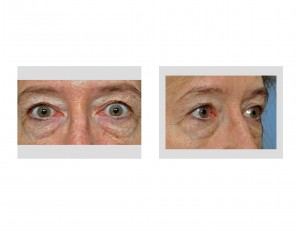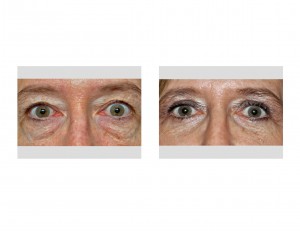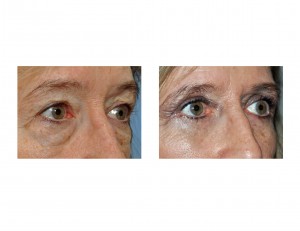Background:Aging of the eyes is both an unavoidable eventuality for everyone and the first and most noticeable place on the face that it occurs. The classic findings are heavy or extra skin on the upper eyelids and bags on the lower eyelids. This combination makes for a tired or older appearance that is recognized by everyone since most of how people see and remember our face is in the eye area.
While these findings are typical periorbital signs of aging, why do they occur? Since most of eyelid closure comes from movement of the upper eyelid, its thin skin is prone to become lax and wrinkled. It eventually falls down into the eyelashes obliterating the supratarsal fold and making the upper eyelid heavy. The bags on the lower eyelids come from herniated fat. As the lower support structures between the tarsusand the lower eye socket edge weaken, fat that is normally under the eye as a supportive cushion protrudes forward. As it bulges past the vertical plane of the infraorbital rim, it appears a bag-like protrusion. This combined with the development of wrinkled and sagging skin give the lower eyelid its baggy and sagging appearance.



While blepharoplasty surgery can make a big difference in the appearance of one’s eyes, it is important to recognize that eyelid function must not be disrupted. Management of the lower eyelid is usually the key to preventing postoperative problems. Not removing too much skin and providing tendinous and muscular support onthe lower eyelid will minimize the risk of ectropion or lower eyelid retraction.
Case Highlights:
1) Aging eyes have extra upper eyelid skin and lower eyelids bags which bother the owner the most.
2) The emphasis of blepharoplasty surgery is removal of skin in the upper eyelid and fat removal in the lower eyelid.
3) Successful and uncomplicated blepharoplasty surgery is based on judicious skin and fat removal with management of a lax lower eyelid if necessary.
Dr. Barry Eppley
Indianapolis, Indiana


